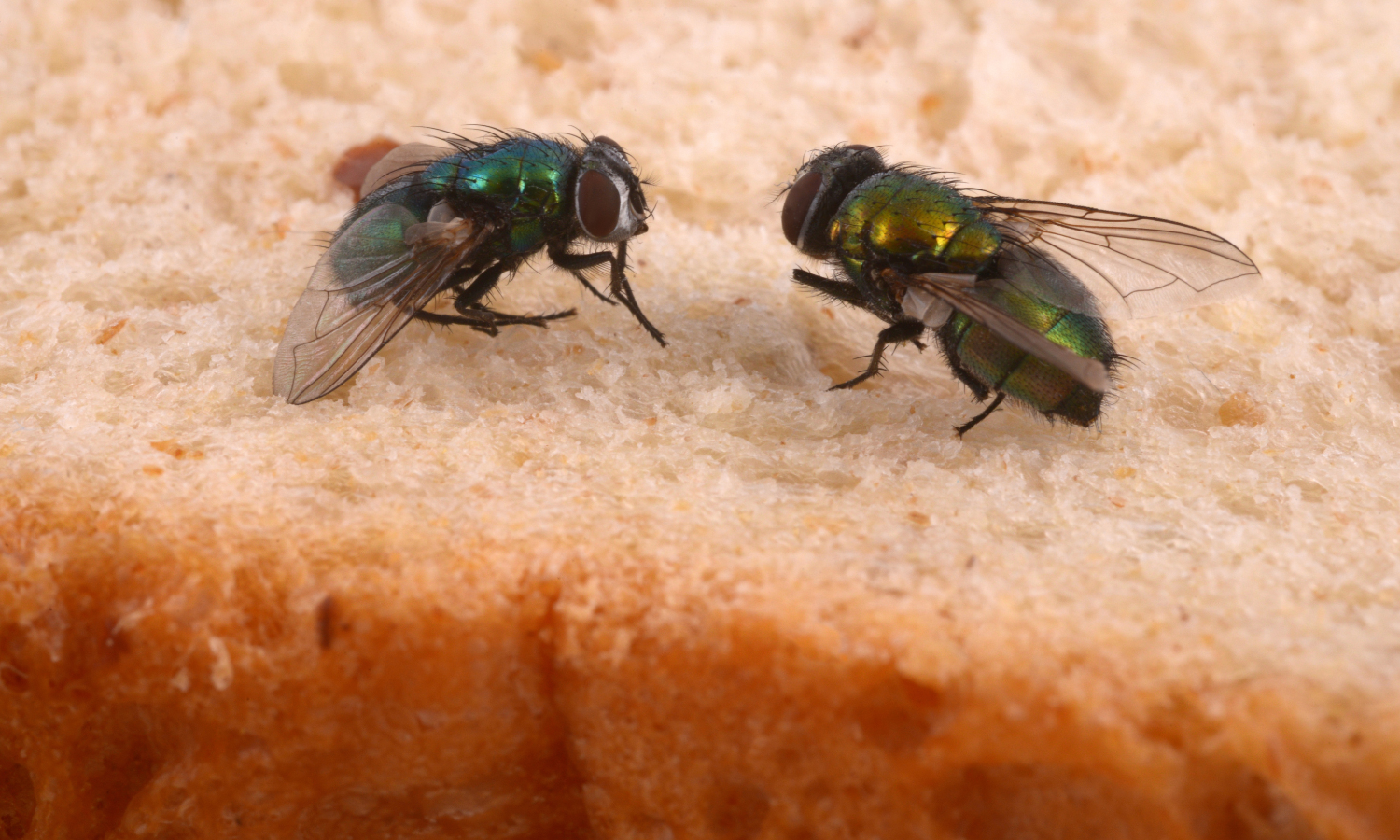The music is turned up loud. The smell of delicious sizzling meat is coming off your barbecue as you patiently flip those perfectly seasoned steaks. There is a slight breeze in the air that tingles your bare arms. The sun is shining. All is well…and then, suddenly—all is not well.
You see a swarm of flies and they’re everywhere—buzzing around your head, trying to land on your hamburgers and attacking your legs. You swat, knocking over your speaker and Jimmy Buffett’s song "Cheeseburger in Paradise" vanishes. You yell, causing your dog to also start yelling (or barking, actually). You hope for someone to come help you. No one comes. The sun goes behind a massive cloud. Did you just hear thunder?
You feel like your afternoon is ruined—all because of a fly. But, flies are disgusting, right? They are attracted to filth and rot. You see them around dumps, garbage heaps and dead animal carcasses. They are strongly suspected to transmit at least 65 diseases to humans, from typhoid fever, cholera and dysentery to food poisoning and diarrhea.
Dr. Killigan is here to help.
Tip: If you’re eating, I would finish that bite and wait until you’ve finished reading to take another. The following might be a bit challenging to digest...
The life cycle of a fly

First, it’s important to understand where a fly comes from. A fly’s life cycle has four stages.
Eggs
A housefly's chosen method of birth is like the fly itself—disgusting. Houseflies will lay their eggs on feces, rotting carcasses and decaying fruit. Why they do it, though, makes sense. They’re providing their babies (larvae and maggots) with something to eat when they hatch, as the female doesn’t stick around to feed or bond with her new brood.
Larvae
After hatching, the larvae begin to eat voraciously. They will feed, grow and molt three times, shedding their exoskeleton before becoming a pupa—usually within a week.
Pupa
During this stage, the fly’s once white, rice-like shell now becomes darker and harder as it begins to transform into the adult form of the fly. This transformational phase, where the fly develops its wings and legs, typically lasts several days before the adult emerges.
Adult
Adult flies break out of their shell and immediately begin looking for a mate. They have, at most, three months to reproduce, which is a considerable period in their short lifespan. They "breed like flies," as the saying goes, and a single female can lay up to 900 eggs during her life, ensuring rapid population growth.
What happens when a fly lands on your food?
The issue with flies is that they, well, fly. Imagine this scenario: Your neighbor’s cat catches a rat, leaving the prize to rot next to your wood pile. As the rat decays, flies are drawn to it and have a feast, crawling all over the now-deformed rat and digesting pieces of it. Then, the fly buzzes into your home through an open door, a tear in a screen or a vent and lands on the juicy pastrami sandwich that you’ve just finished making. Without really thinking about it, you shoo the fly away and then take a big bite of that sandwich, right where the fly had landed.
Flies regurgitate
Flies lack the mouthparts needed to chew food; so, instead, they drink it. They do so by regurgitating digestive juices onto solid foods, which break down the food into smaller pieces, thus allowing them to use their mouthparts to siphon the meal. To keep it simple, they vomit on whatever they’ve landed on to soften it and then eat (or drink) it up.

Flies frequently defecate
They defecate anywhere and everywhere. Because they live off of a liquid diet, their digestive system moves quite quickly, which means, as I’m sure you’ve guessed, they defecate often. It is highly speculated that house flies defecate every time they land, even if that next landing is their meal.
Flies spread disease
We’ve mentioned this earlier, but it’s important to note again. Flies are vectors for several severe diseases, including typhoid fever and cholera. If you find that your stomach is turning after a picnic lunch in the city (where they are bound to be a lot of flies) or after eating a roadside meal, the culprit may just be a fly.
Note: If a fly lands on your food for only a few mere seconds, the chances of microbes (germs or bacteria) transferring is low. You might just be OK…
How to rid flies from your home
Dr. Killigan has proven methods of ridding your home of flies.
Dr. Killigan’s The Fly Inn Flying Insect Traps
Windows are supposed to light up your life, but when the sun pours in they can become a disgusting landing pad for flying insects. Now, Dr. Killigan’s can help you restore peace to your home—and remove the unwanted guests—with a different kind of fly trap: The Fly Inn.
Designed to work when placed properly on windows where flying insects are frequently found, The Fly Inn is the trap that catches flies, then hides the bodies. That means your home stays as beautiful as ever and gives you the comfort of knowing you never have to see those flying insect tourists again.
In addition to a beautiful design, Dr. Killigan’s notes confirm that The Fly Inn—like every pest control solution we provide—is 100% non-toxic, helping you take back control from pests while keeping everyone in your family safe.
Note: For additional natural methods to deter flies and enhance your efforts, read 4 natural ways to deter flies. This guide provides tips and insights to complement the effectiveness of The Fly Inn.





















